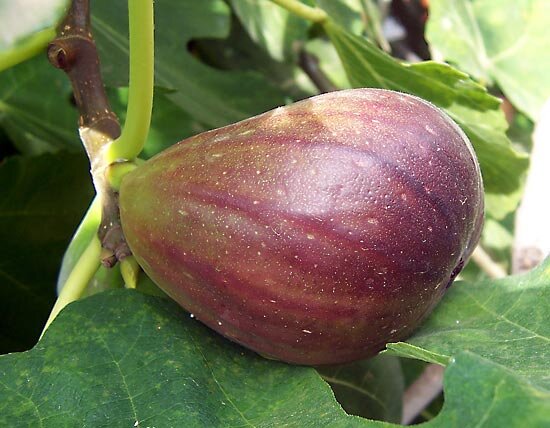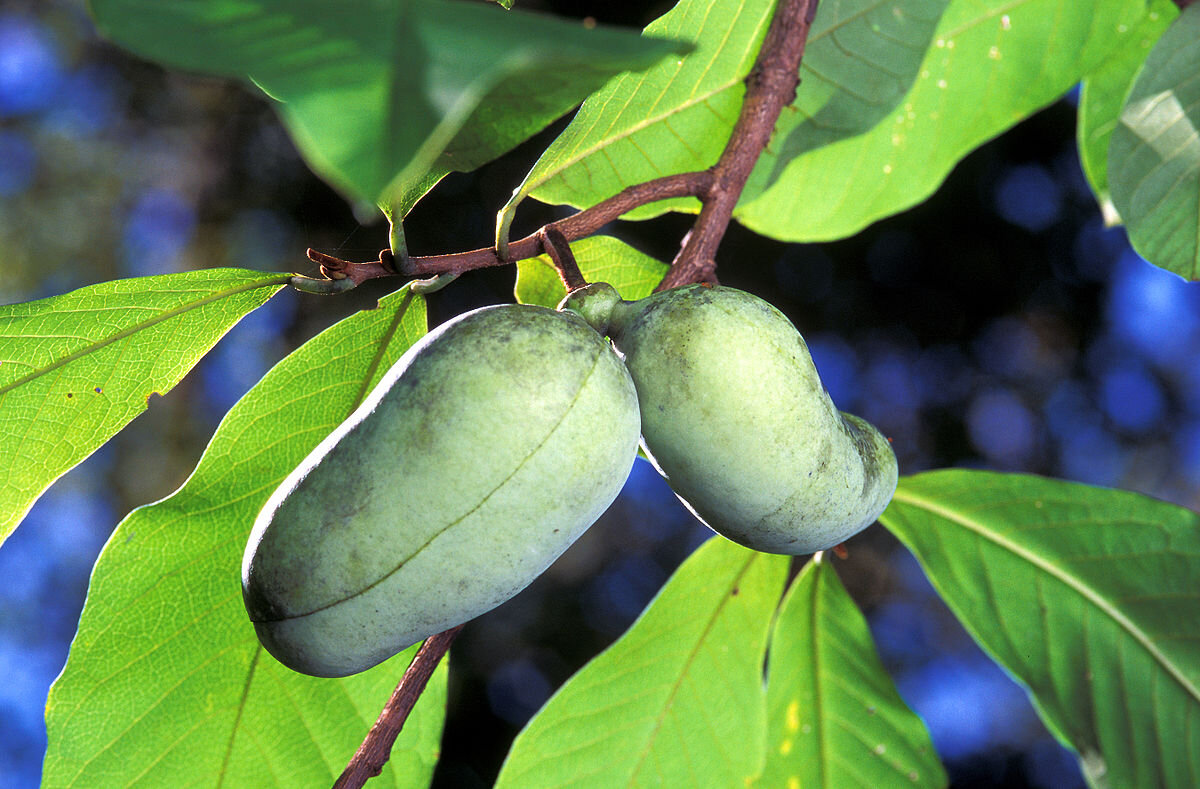Welcome to my Food Forest where I grow an number of fruits in the Bee Better Teaching Garden. Information in this fruit series is based on knowledge I’ve gained growing in hardiness zone 7b, in Raleigh, North Carolina. Helen Yoest
Kind:
Latin Name: Ficus carica
Common Name: Figs
Type: Deciduous shrub
Height: 10 to 15 feet
Spread: 10 to 15 feet
Pollination: The common fig tree does not need another tree for pollination, but you should be pesticide free, as with anything you grow! See what’s next below.
You can’t make this stuff up. Fig pollination is something out of a SiFi movie! You might not think of figs as nature’s most amazing creation, but you need only look inside to start to understand their awesome complexity. The fruit is actually an inward-blooming flower, or rather, bundle of flowers—and its survival depends on a wasps that gives its life in service of the Ficus carica.
Every single one of the 750-plus species of fig plants have its own fig wasp, and together, the figs and wasps have been evolving together for more than 60 million years.
In order to pollinate the plant, a female wasp enters an unripened, male fig (not the ones we eat) and lays her eggs. Once the newborns hatch, they all mate, and the wingless males chew a tunnel out of the fig. Then they die, and the females escape the male fig through the escape hole, where they take flight in search of another fig tree in which to lay their respective eggs.
Once the females pick a plant, she crawls inside, drops some pollen from their birthfig, as well as their future babies, and the whole thing starts anew.
Fruit Health Benefits: Figs are high in natural sugars, minerals, and soluble fiber. Figs are rich in minerals including potassium, calcium, magnesium, iron, and copper, and are a good source of antioxidant vitamins A and K that contribute to health and wellness.
Figs are today's featured superfood because, overall, their nutritional value is impressive. Figs have the highest mineral and fiber content of all common fruits, nuts, or vegetables. One serving of figs (fresh or dried) provides 6% of the Daily Value for calcium and iron, and 7% of the Daily Value for potassium.
Wildlife Benefits: Food for many species of birds, bats, opossum, and other wildlife.
Origin of species: Indigenous to western Asia and southeastern Europe.
Cultivars:
In the Bee Better Teaching Garden we grow ficus carica ‘Brown Turkey’, and F. carica ‘Celeste’. With these two varieties, we have figs most of the summer.
We also grow Ficus carica ‘LSU Purple’. It was first grown in a container, then transplanted to the ground. It hasn’t fruited for us yet, but the plant is only acquired in 2014.
‘Brown Turkey’ produces abundant medium to large figs. This type works best in warm climates, but is fairly tolerant of cooler temperatures, too.
‘Celeste’ produces small, sweet, purplish figs. It is one of the more winter-hardy varieties.
Culture Information:
Sun: Full sun to part shade
Water: Medium
Zone: 6 to 9
Years to bear fruit: 2 to 6 years.
Harvest Time: Depending on the variety. With the cultivars we grow, we have coverage all summer. ‘Brown Turkey’ has two crops, a small, light crop before ‘Celeste’ and a heavy crop of med-sized fruit 2 to 3 weeks after ‘Celeste’. Between the two, you’ll have good coverage during the summer.’
Care:
Plant: Locate it in part shade. The plant will perform best in evenly moist, fertile, well-drained soil.
Fertilizer/pH: Fig trees are so easy to grow is that they rarely need fertilizer. In fact, giving a fig tree fertilizer when it doesn’t need it can harm the tree. A fig tree that gets too much nitrogen produces less fruit and is more susceptible to cold weather damage. Figs are naturally slow-growing trees, and giving them fertilizer can cause growth spurts that result in splits and cracks in trunks and branches. We at Bee Better Naturally don’t fertilizer our figs. So far, we haven’t needed too.
Mulch: Keep the area around the fig tree covered with an organic mulched.
Groom/Prune: Pruning is primarily performed to manage the size of the tree, and thus harvesting height.
The first winter period of dormancy, prune fig tree in half. This severe pruning will allow the plant to remain a compact, and allowing the fig tree to direct its energy to root development rather than to getting bigger.
The second winter period of dormancy, continue this training process. Promote just a few of the strongest, newest branches., and are considered fruiting wood. These branches will become your mainstays for fruit production. But they will need room, so make sure the ones that you choose to promote are evenly distributed around the plant.
At maturity, prune back the length of the branches of fruiting wood by a third. This will keep the plant compact and more accessible for picking.
Anytime grooming, remove damaged, dead, or diseased limbs .
OR YOU CAN DO NOTHING. But you’ll have a huge plant and not likely to pick as many fruit as you wish. But the wildlife will be happier!
Pest/disease Control: Very few pests. Scale can be a problem, but doesn’t need treatment. We overthink these kinds of problems. If the plant isn’t affected, let nature take its course.
Root-knot nematodes can be a problem. Nematodes are microscopic worms that live in the soil. They enter plant roots and feed on plants much like leeches do on animals. Nematodes rarely kill fig plants but do cause them to drop fruit and stunt their growth. This pest is more common in sandy soils.
There is no way to eradicate nematodes from the soil, though amending soils heavily with compost before planting, mulching, and watering will help plants cope with the stress they cause.
The only other problem figs sometimes experience in our area is cold damage. This is more common in particularly cold winters or when extremely cold temperatures follow a stretch of unseasonably mild weather in late winter. It is very rare for figs to be killed completely, though they may have to be cut back to the ground and allowed to re-grow if heavily damaged. Cold damage can be minimized by planting fig bushes against a south-facing wall.
The cultivars grown in the Bee Better Naturally Teaching garden has never had a pest problem.
Propagation: Coming soon!
Comments:
With all my heart, I think every homeowner who loves the sweet taste of a ripe figs, would grow a fig tree. The shelf life is limited, and the cost of a fresh fig at the market is $1.00 or more. If you love figs, and who doesn’t, it’s best to grow your own. They do well in containers too, so there is no excuse!




















































